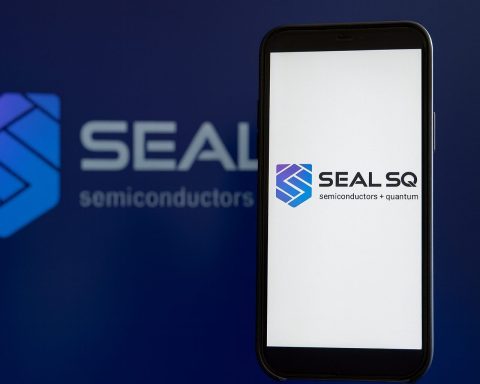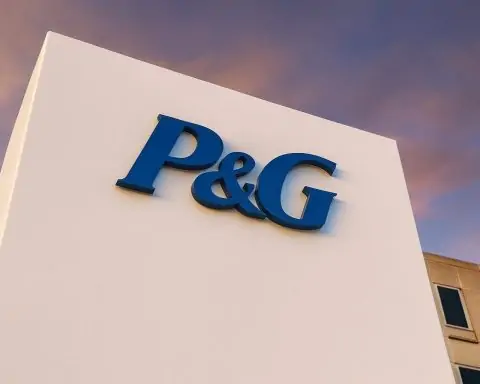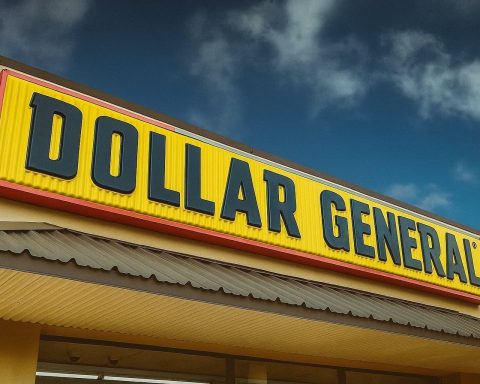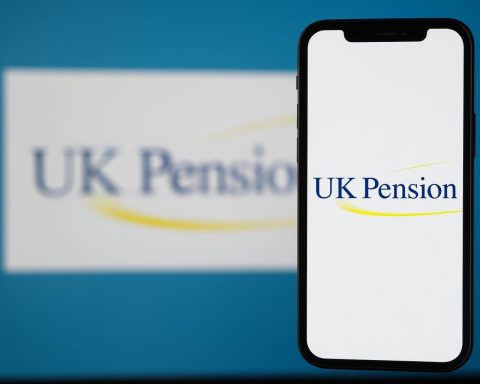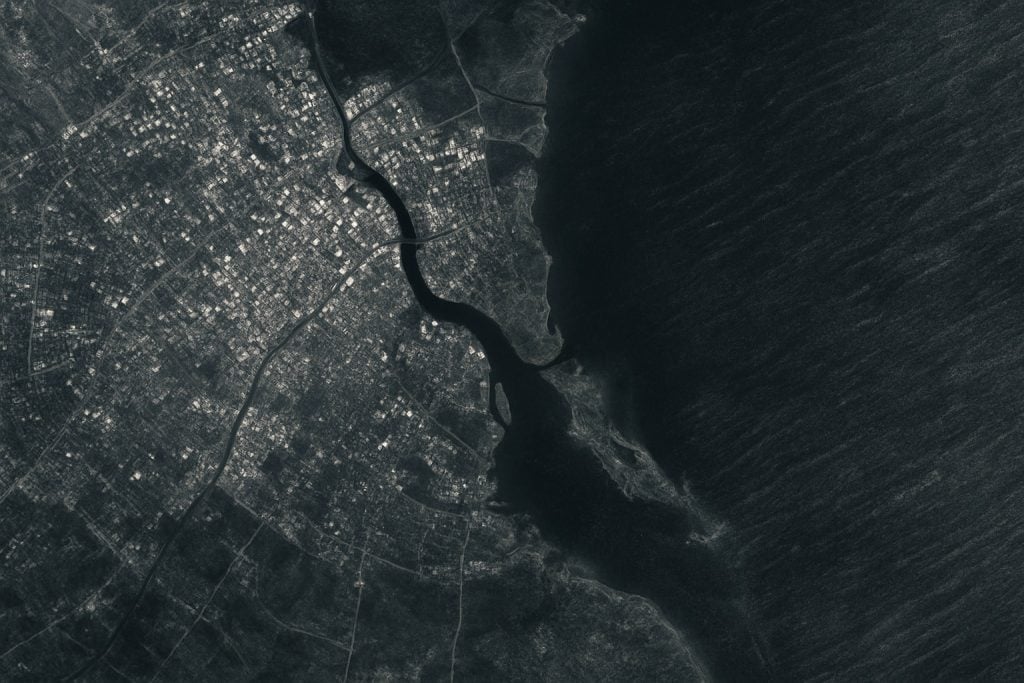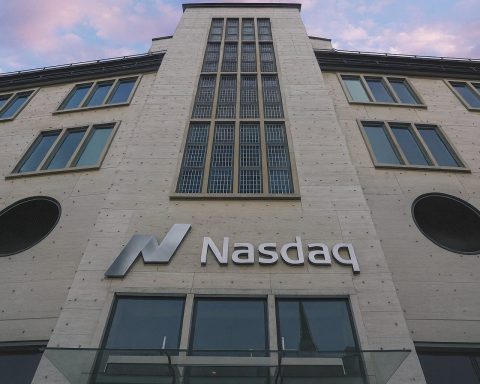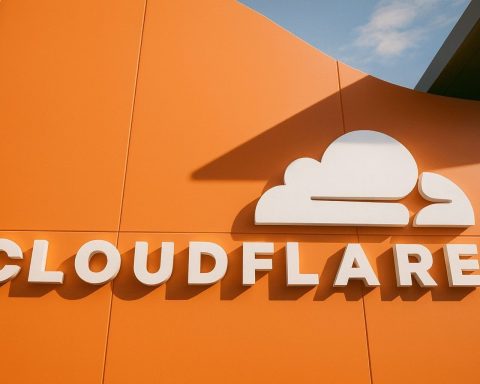- As of 2024, 94.7% of Luxembourg households are served by a Very High Capacity Network (approximately 1 Gbps or more), with coverage rising to 95.2% by 2025.
- Fiber-to-the-premises coverage is about 80% of households, with FTTH deployment underway since the late 1990s.
- Cable broadband via DOCSIS 3.1 from Eltrona/Telenet reaches about 90% of households, typically delivering 500 Mbps or higher.
- NGA availability (networks offering at least 30 Mbps) reaches 99% of households thanks to VDSL2 with fiber-to-the-cabinet and cable networks.
- Orange Luxembourg offers Livebox Fiber up to 8.5 Gbps down and 1.5 Gbps up for around €99.99 per month.
- Luxembourg launched 5G in 2020, and by 2024 5G coverage reached 99.6% of the population, well above the EU average.
- Starlink became available in mid-2022, delivering typical downloads of 50–200 Mbps with 30–50 ms latency and monthly fees around €60–€80 plus a €300 hardware kit.
- SES S.A. operates the O3b mPOWER network for enterprise and mobility links, GovSat provides secure government communications, and Luxembourg participates in the IRIS² constellation planned for 2027 after OneWeb’s merger with Eutelsat.
- The Ultra High-Speed Broadband Strategy 2021–2025 aims for universal gigabit connectivity and includes phasing out copper PSTN/DSL.
- The Last 5% project by MyConnectivity and LNDS maps remaining underserved sites—about 8,000 buildings—prioritizing fiber extensions and potential subsidies to close the gaps.
Luxembourg has emerged as one of Europe’s leaders in internet connectivity, boasting near-universal broadband coverage and world-class speeds. From extensive fiber-optic deployments to cutting-edge mobile networks, the Grand Duchy’s digital infrastructure is speeding ahead. Yet questions remain about how to connect the few remaining gaps and whether the country’s connectivity can truly reach the stars – by embracing satellite internet and future technologies. This report provides an overview of internet access in Luxembourg, covering infrastructure, providers, speeds, 5G rollout, satellite services, government initiatives, urban–rural disparities, and upcoming developments.
Internet Infrastructure Overview: Fiber, DSL and Cable
Luxembourg enjoys a robust, modern internet infrastructure. Fixed broadband coverage is essentially 100%, meaning every household can get at least basic internet (e.g. DSL) [1]. Legacy DSL (over copper telephone lines) reaches all premises up to ~25 Mbps and has served as the baseline nationwide [2]. However, the country has rapidly upgraded to next-generation networks:
- Fiber-Optic (FTTH): Fiber deployment has been in progress since the late 1990s, and today a vast majority of households are passed by fiber. By 2021, about 75% of homes had FTTH coverage, a figure that has continued to rise [3]. The latest estimates show fiber-to-the-premises now covers roughly 80% of households [4]. Fiber offers gigabit speeds and is becoming the default broadband medium; indeed, since 2020 fiber connections have overtaken copper as the most used technology for fixed internet in Luxembourg [5].
- Cable (DOCSIS): Luxembourg’s cable television network (now operated by Eltrona/Telenet) has been upgraded to DOCSIS 3.1, providing gigabit-capable internet over coaxial cable. About 90% of households are within reach of cable broadband [6], often delivering 500 Mbps or higher. This cable infrastructure – historically chosen by over 70% of households – has long been a pillar of high-speed access [7].
- VDSL: The incumbent operator deployed VDSL2 with fiber-to-the-cabinet in many areas, extending high-speed copper connectivity. As a result, 99% of households have access to “Next Generation Access” (NGA) broadband (networks offering ≥30 Mbps, such as VDSL, cable or fiber), far above the EU average (~90%) [8]. Even in rural villages, VDSL or coax often provides tens of Mbps.
- Gigabit Networks (VHCN): Combining fiber and cable, Luxembourg has achieved near-ubiquitous gigabit coverage. As of 2024, 94.7% of households are covered by a Very High Capacity Network (VHCN) offering ~1 Gbps or more [9]. By 2025, coverage reached about 95.2% of households [10] – placing Luxembourg among the top 2–3 countries in Europe for gigabit availability [11]. This fulfills the national “ultra-high-speed” broadband strategy goal of providing every home with access to 1 Gbps download and 200 Mbps upload capability [12] [13].
- Full Transition to All-IP: Luxembourg is phasing out legacy networks. POST Luxembourg (the main telco) has aimed to retire traditional copper phone lines by 2024, replacing them with fiber/IP-based lines for both voice and internet [14]. This modernization improves energy efficiency and paves the way for shutting down old DSL infrastructure once fiber is available everywhere.
In summary, virtually every Luxembourger can get online, and most can access ultra-fast fixed broadband. The few remaining pockets without fiber or cable are the final hurdle to 100% gigabit coverage.
Major Internet Service Providers and Offerings
Despite its small size, Luxembourg has a competitive telecom market. Several providers – a mix of domestic and international players – offer broadband and mobile services. The key ISPs include:
- POST Luxembourg – the state-owned incumbent, providing fixed telephony, broadband (DSL, fiber, and formerly cable†), and mobile services. POST’s “POP” Fiber packages deliver up to 1 Gbps standard, with new XGSPON fiber options advertising speeds up to 8.5 Gbps download [15]. POST also operates Luxembourg’s largest mobile network (branded “POST” for mobile).
- Orange Luxembourg – a subsidiary of Orange (France), offering mobile and fixed internet (primarily via the national fiber network). Orange has aggressively pushed multi-gigabit fiber: its Livebox Fiber plans start at 500 Mbps (for ~€50/month) and can be boosted to 2 Gbps or 8.5 Gbps for higher fees [16]. Notably, Orange introduced a top-tier ~10 Gbps service (advertised 8.5 Gbps down / 1.5 Gbps up) for about €99.99/month [17], making it a gigabit market frontrunner. Orange also operates one of the three mobile networks in the country.
- Tango (Proximus Luxembourg) – originally a mobile operator, now part of Belgium’s Proximus group, Tango offers both mobile and fixed broadband. It resells fiber connectivity (via POST’s network) under “GO)) Fibre” plans, with speeds up to 2 Gbps on its top tier [18] [19]. Plans include 150 Mbps (Fibre S), 500 Mbps (M), 1 Gbps (L), and 2 Gbps (XL), often bundled with TV or mobile. Tango’s mobile arm is the third facilities-based 4G/5G operator.
- Luxembourg Online (LOL) – a local ISP providing fiber broadband, DSL, TV, and VoIP. It uses the national fiber network to reach customers. Luxembourg Online typically offers up to 1 Gbps plans. In 2023 it shook up the market with a promotional 1 Gbps fiber subscription at €34.90/month (price locked for two years) – the first time such a gigabit offer hit that price point in Luxembourg [20]. After the promo period, its 1 Gbps pricing remains competitive (regularly in the €50–€65 range).
- Eltrona – the primary cable operator, now fully owned by Belgium’s Telenet. Eltrona’s cable network (coax) covers much of the country, and the company offers broadband, TV, and phone over cable. With DOCSIS 3.1 upgrades, Eltrona provides 500 Mbps to 1 Gbps internet tiers. For example, it advertises a 1 Gbit/s cable package for €49/month, contract-free [21]. Eltrona’s infrastructure is also accessible to alternative ISPs in a wholesale model.
- Others: A few smaller players and business-focused providers exist (e.g. Visual Online, Cegecom). These often target enterprise connectivity, data centers, or niche services. Additionally, MVNOs and resellers (like SFR before merging with Eltrona) have come and gone, but the consumer market is largely served by the above companies.
Mobile Networks: On the mobile side, Luxembourg has three 4G/5G network operators – POST, Orange, and Tango – corresponding to the above telecom firms. All three offer nationwide voice/data coverage and compete with unlimited or generous data plans (often bundled with fixed services for discounts). For example, POST’s POP Mobile lineup includes 5G by default and even offers an “unlimited 5G” plan (with up to 1 Gbps theoretical mobile download) [22]. Mobile virtual network operators are limited; the market is dominated by the facilities-based trio, which keeps quality high.
Broadband Plans and Prices
Residents of Luxembourg enjoy high speeds but at prices generally on par with Western European averages. Below is a snapshot of typical fixed broadband offerings as of 2024–2025:
| Provider | Plan Name & Speed | Monthly Price (incl. VAT) | Notes |
|---|---|---|---|
| POST Luxembourg | POP Internet L – 1 Gbps | ~€65 (standalone) [23] [24] | Price may include TV service (POP L with TV is ~€67 [25] [26]). Higher 8.5 Gbps “POP XL” available (priced ~€99). Installation free on fiber. |
| Orange Luxembourg | Livebox Fiber – 500 Mbps (base) up to 8.5 Gbps (boost) | €49.99 (500 Mbps); €69.99 with 8.5 Gbps option [27] | First 3 months often €0 or €29.99 promo. Includes Wi-Fi 6/7 router. 1.5 Gbps upload on 8.5 Gbps plan [28]. |
| Tango (Proximus) | GO)) Fibre S/M/L/XL – 150 Mbps / 500 Mbps / 1 Gbps / 2 Gbps | €35 – €70 (est.) depending on tier | 150 Mbps from ~€35; 1 Gbps ~€ Fifty+; 2 Gbps likely ~€70 (exact pricing via bundles). Includes landline phone. 4G backup offered during installation [29] [30]. |
| Luxembourg Online | Fiber 1 Gbps | €34.90 (promo 24 mo) [31] then ~€64 | Aggressive promo for new customers [32]. Standard price around €59 for 1 Gbps standalone. Lower-tier plans (e.g. 500 Mbps) available. |
| Eltrona (Telenet) | Cable Max – 1 Gbps | €49 (no commitment) [33] | Cable broadband with unlimited data. Wi-Fi modem included. Lower speeds (e.g. 500 Mbps) at slightly lower cost. Telenet’s takeover may introduce new bundle options. |
Sources: Provider websites and comparisons [34] [35] [36] [37]. (Prices are indicative; promotional discounts may apply and multi-play bundles can reduce costs.)
As the table suggests, gigabit fiber subscriptions tend to cost ~€50 per month in Luxembourg, with a typical range of €49–€60 for 1 Gbps service [38]. This is roughly on par with neighboring countries (though still higher than the EU’s average broadband price for similar speed, which is around €35 [39]). Lower-speed plans (100–500 Mbps) are often a bit cheaper (in the €30–€50 range), whereas the new multi-gigabit offerings (2–10 Gbps) command a premium (up to ~€100/month for top-tier residential service). It’s worth noting that competition is driving prices down – the introduction of a €34.90 1 Gbps offer by Luxembourg Online is likely to spur other ISPs to consider promotions [40].
On the mobile front, prices are comparable to Western European norms and often include unlimited national data. A typical smartphone plan with unlimited 4G/5G data might cost around €40–€50/month. Premium plans (with more EU roaming data, international minutes, etc.) can be higher, while budget options with caps also exist. 5G access is usually included at no extra cost in mid- to high-end plans, reflecting the operators’ push to encourage 5G adoption.
Internet Speed and Global Rankings
Luxembourg’s investment in fiber and cable networks has paid off in terms of real-world speeds. The country enjoys some of the fastest internet connections on the planet:
- Fixed Broadband Speeds: Luxembourg’s fixed broadband ranks among the top in Europe. In fact, one analysis (cable.co.uk’s World Broadband Speed League 2022) placed Luxembourg 8th fastest worldwide with a mean download speed around 132 Mbps [41] [42]. Since then, speeds have only improved as fiber penetration increased. By 2024, average fixed download speeds in Luxembourg were in the 200–300 Mbps range, and median speeds also very high. For context, global speed indexes often show Luxembourg in the top 10–15 countries for fixed internet. Neighboring countries lag behind (e.g. France was 10th and Germany 33rd in the same 2022 study) [43] [44]. The near-symmetrical nature of many fiber plans (often 500–1000 Mbps upload) also means users enjoy excellent upstream throughput.
- Mobile Data Speeds: Mobile connectivity in Luxembourg is similarly impressive. The latest rankings (Q3–Q4 2024) showed Luxembourg with a median mobile download speed of ~114 Mbps, placing it 10th globally [45]. This outranks most of Europe; only a few countries (typically those with early 5G rollouts in mid-band spectrum) are ahead. The UAE and Qatar top the list, but Luxembourg edges out many larger nations in mobile performance [46] [47]. All three operators have deployed extensive 4G+ and 5G, leading to these high speeds. A recent report from Speedtest Intelligence (H2 2024) found that Post Luxembourg delivered the fastest mobile data (median download ~135 Mbps), with Orange second (~106 Mbps) and Tango around 99 Mbps [48] [49]. On 5G networks alone, speeds are even higher – Post’s 5G users averaged over 200 Mbps download [50]. In short, streaming HD or video calls on the go is rarely an issue in Luxembourg.
- Latency: Thanks to modern networks and Luxembourg’s geographic centrality (with many European internet hubs nearby), latency is low. For mobile, Post’s 4G/5G network showed an average latency around 25 ms, beating out Orange (37 ms) [51]. Fixed networks, especially fiber, routinely offer ping times <5–10 ms to local servers (Luxembourg has major internet exchange points and data centers, minimizing distance to content).
Comparatively, Luxembourg consumers enjoy better speeds than almost anywhere in the EU. The country handily exceeds the EU’s 2025 Digital Agenda targets (100 Mbps available to all, 1 Gbps subscriptions for 50% of households) – targets it has essentially already met or surpassed [52] [53]. The abundance of gigabit connections means even bandwidth-hungry applications (4K streaming, cloud gaming, large file transfers, etc.) pose no problem. It’s not uncommon for real-world home internet speeds to test at 500 Mbps or above, especially on fiber. With emerging 10 Gbps services, Luxembourg is also testing the upper limits of consumer speed – downloading a multi-gigabyte video game or HD movie, which once took hours on DSL, can now finish in seconds on the top-tier plans.
5G Network Coverage and Rollout Status
Luxembourg was an early adopter of 5G in Europe and now enjoys virtually nationwide 5G coverage. A dedicated 5G Task Force was established by the government to keep the country at the forefront of next-generation mobile tech [54] [55]. Key milestones and current status of 5G include:
- Launch and Operators: All three mobile operators launched commercial 5G service in 2020 [56], among the first wave of European nations to do so. Initial deployments focused on Luxembourg City and other major towns, using mid-band frequencies around 3.6 GHz (for high capacity) and existing lower bands for wider coverage.
- Spectrum and Technology: Luxembourg’s regulator (ILR) allocated 5G spectrum in the 700 MHz, 3.6 GHz, and 26 GHz bands. The 3.5–3.8 GHz band is the primary one for 5G and has been deployed extensively by POST, Orange, and Tango. This band allows several-hundred-Mbps throughput. Operators have also repurposed some 4G spectrum (e.g. 1800 MHz) for 5G NSA, and are poised to introduce 5G Standalone cores which will enable features like network slicing and even lower latency.
- Coverage Achieved: Thanks to rapid rollout, 5G covers 99.6% of Luxembourg’s population/households as of 2024 [57]. In practical terms, 5G signal (of some band) is available almost everywhere a 4G signal is, both in urban and rural areas. This is well above the EU’s average ~89% 5G coverage [58]. The small size of the country (roughly 2,600 km²) and its dense cell site network facilitated a quick build-out. Even using the higher-frequency band, the operators have upgraded a majority of existing tower sites to 5G. By mid-2023, the government reported over 250 active 5G antennas in operation, with dozens more planned to fill any remaining gaps.
- 5G Performance: Users in Luxembourg City report typical 5G download speeds of 300–600 Mbps on mid-band 5G, with peak rates above 1 Gbps under ideal conditions. Rural 5G (often on low-band 700 MHz) gives more modest improvements over 4G – but still provides better range and capacity. The focus now is on increasing the density of 3.5 GHz coverage and introducing 5G Standalone (which Post and Orange have been trialing). With Standalone 5G, latency could drop further and IoT capabilities expand, supporting advanced use cases (smart cities, industrial IoT, etc.).
- Consumer Adoption: 5G-capable smartphones have become common (new models from Apple, Samsung, etc. all support it), and the carriers often include 5G in plans by default. Adoption was initially slow – by end of 2021 only ~10% of mobile subscriptions were using 5G – but has accelerated as coverage and device availability grew. As of 2024, a significant share of customers on POST and Orange are actively using 5G. 4G coverage remains excellent as well (99.8% LTE coverage) [59], ensuring fallback connectivity in areas or indoors where high-band 5G might be weak.
Overall, Luxembourg’s 5G rollout can be deemed a success: it met the government’s strategic goal of early deployment and almost universal coverage. The country’s highways, city centers, and even rural communes now have 5G service. This positions Luxembourg well for any future mobile innovations (such as 5G-enabled autonomous systems or broadband-to-the-home via 5G Fixed Wireless in remote spots). In fact, operators like Tango already offer a 4G/5G home internet solution (“4G@Home”) as an immediate fix for addresses awaiting fiber [60]. As 5G capacity grows, such wireless broadband could help bridge the remaining gaps.
Reaching the Stars: Satellite Internet in Luxembourg
No report on connectivity “reaching the stars” would be complete without examining satellite internet. Luxembourg has a unique profile in this domain – it is home to one of the world’s largest satellite operators, SES, and it is also covered by new low Earth orbit (LEO) services like Starlink. Here’s a look at satellite internet availability and usage in Luxembourg:
- Starlink (SpaceX): Elon Musk’s Starlink service became available in Luxembourg in mid-2022 [61] as part of its rapid global expansion. Using a dish antenna, Starlink connects via a constellation of LEO satellites to deliver broadband anywhere with a clear sky view. In Luxembourg, Starlink can typically provide download speeds of ~50–200 Mbps (varying with network load) and latency ~30–50 ms – good enough for everyday web use, though not as fast or stable as fiber. The standard Starlink plan costs around €60–€80 per month (plus a ~€300 hardware kit). This is far pricier per Mbps than terrestrial broadband – indeed, EU reports note an average ~€49 monthly cost for Starlink versus ~€21 for similar traditional broadband, and upfront equipment fees on top [62] [63]. As a result, Starlink in Luxembourg is primarily a niche solution for those who cannot get a decent fixed line or who need connectivity in a mobile/remote setting. Given Luxembourg’s 95% VHCN coverage, the addressable market for Starlink at homes is very small (perhaps a few hundred rural households or specific users with unreliable DSL). That said, Starlink has seen some uptake for mobile installations (e.g. for RVs, maritime or as a backup link for businesses) and offers an alternative path to connectivity in case of terrestrial outages. In a symbolic sense, Starlink does allow Luxembourg’s internet to “reach the stars,” by routing data through satellites – but its impact on the consumer market remains modest.
- SES and Other Satellite Providers: Luxembourg is a powerhouse in satellite communications through SES S.A., which operates fleets of geostationary (GEO) and medium-Earth orbit satellites. SES’s O3b mPOWER network (MEO satellites orbiting ~8,000 km high) can deliver high-throughput connectivity worldwide. However, SES prioritizes corporate, government, and mobility clients, and does not offer direct-to-consumer internet in Luxembourg [64]. SES connectivity is used for applications like connecting airplanes, ships, remote corporate sites, and even NATO military communications [65]. Terminals are expensive and not “plug and play” for consumers (a reason SES hasn’t competed in the home broadband segment). Another Luxembourg-based venture is GovSat (a joint government-SES satellite for secure communications), but that too is not for civilian internet access.
- OneWeb / Eutelsat: With the recent merger of OneWeb into Eutelsat, Europe has its own LEO constellation in development. Luxembourg is an EU member supportive of diversifying satellite options. OneWeb’s service (still focused on enterprise) is technically available in the region, but requires ~$10,000 terminals and has seen no residential use locally [66] [67]. The forthcoming IRIS² European constellation (planned by 2027) aims to bolster satellite broadband for governments and remote areas [68], and Luxembourg is participating in this initiative as part of the EU’s digital sovereignty strategy.
- Market Share and Outlook: The market share of satellite internet in Luxembourg is currently very small – likely well under 1% of internet connections. The vast majority of users simply have no need for it, given the ubiquity of fiber, cable, and 4G/5G. Satellite fills a gap for the gap: those last few percent of locations without ground networks, or special use cases (redundancy, mobility). In the coming years, satellites may play a complementary role in Luxembourg’s connectivity ecosystem. For example, authorities see satellite as helpful for resilience (backup links during outages or emergencies) and for connecting moving platforms (like aircraft or cross-border trains). If Luxembourg succeeds in connecting the last rural homes with fiber or 5G, satellite will remain mostly in the background. But if some ultra-remote farmstead or a new “smart tractor” in the field needs a link, a LEO satellite could be a solution. In short, Luxembourg’s internet can “reach the stars” when needed, but the stars won’t be replacing its fiber cables any time soon. As one telecom analyst put it, in Europe “if I can get fiber, I will take fiber… if I don’t have good broadband by traditional means, then great, I’ll have the satellites” [69] [70]. That sentiment holds true in Luxembourg’s case.
Government Policies and Initiatives for Connectivity
The Luxembourg government has been proactive in fostering a world-class digital infrastructure. Several policies, strategies, and initiatives underpin the country’s connectivity success:
- Ultra High-Speed Broadband Strategy 2021–2025: This is the national broadband plan aiming for “Connectivity for All.” Its objectives include ensuring every household can access at least one gigabit-capable network (VHCN) and preventing any digital divide [71] [72]. The strategy is technology-neutral but emphasizes future-proof infrastructure (favoring fiber). A key goal (Objective 3) is to migrate all households to scalable, energy-efficient networks and progressively disconnect old networks (i.e. phase out the copper PSTN/DSL) [73]. By focusing on universal Gigabit and upgrading legacy lines, the plan directly led to the ~95% VHCN coverage achieved by 2023–24.
- Connectivity in Rural Areas: Acknowledging that connecting the final few remote areas may not be economically attractive for private operators, the government allows for public support or subsidies to ensure rural connectivity [74]. A joint public-private entity, MyConnectivity G.I.E., was formed to coordinate broadband expansion and target the remaining underserved spots [75] [76]. In 2023–24, MyConnectivity and the Luxembourg National Data Service (LNDS) launched a “Last 5%” project to identify every building lacking ultra-high-speed access and prioritize solutions [77]. (About *5% of buildings – roughly 8,000 sites – still lacked fiber or cable as of 2023 [78] [79].) The government is evaluating measures like vouchers or co-investment to incentivize build-out to these areas. The clear policy message is that 100% coverage is the endgame, and no village or farm should be left offline.
- 5G Strategy: Luxembourg’s government published a dedicated 5G strategy and set up a task force to facilitate rollout [80] [81]. This involved spectrum auctions in a timely manner, streamlined site permitting, and cross-border coordination (important given Luxembourg’s small territory and neighboring countries’ networks). The strategy also explores 5G use-cases in smart mobility, logistics (Luxembourg’s role as a freight hub), and even space (the country is interested in satellite-terrestrial 5G integration). As a result of these efforts, Luxembourg was one of the first in the EU to have 5G from all providers and achieves extremely high population coverage [82]. The government continues to monitor 5G deployment to ensure it remains “at the forefront of connectivity” [83].
- Regulatory Measures: The Institut Luxembourgeois de Régulation (ILR), Luxembourg’s telecom regulator, enforces pro-competition rules. For instance, POST (incumbent) must provide wholesale access to its fiber network for alternate ISPs [84] – this is why Orange, Tango, and LuxOnline can all offer services over the same fiber infrastructure. The government also instituted building regulations to support broadband: since 2017, new buildings must include fiber-ready in-house cabling and municipalities must mandate fiber ducting in new developments [85]. These forward-looking rules mean any new home is prepared for fiber from day one, avoiding costly retrofits. Additionally, Luxembourg has designated internet access as part of universal service – ensuring a basic 100 Mbps connection is available at an affordable price to all citizens if the market doesn’t provide it [86] [87].
- Consumer Tools and Protections: The government launched Checkmynet.lu, a free speed and quality test tool for users [88]. If a subscriber consistently gets lower bandwidth than contracted, they can use the test results to demand improvements or go through ILR’s mediation process [89]. Such measures empower consumers and encourage ISPs to deliver on their promises. There’s also a public broadband mapping portal (on Geoportail.lu) showing fiber, DSL, and cable coverage by locality [90], adding transparency to network availability.
- Digital Inclusion: Recognizing that connectivity is a prerequisite for digital society, Luxembourg’s policies tie into broader digital agendas. Initiatives under the Digital Luxembourg umbrella promote digital skills and usage so that fast internet isn’t just available, but also utilized by all demographics. Notably, 99.4% of people in Luxembourg use the internet – one of the highest usage rates in Europe [91]. For the small minority of non-users (often elderly or disadvantaged), the state runs programs to improve uptake, underlining that access alone isn’t enough without adoption.
Through these combined efforts, Luxembourg’s government has created a supportive environment for connectivity growth. Private investment has done much of the heavy lifting (Luxembourg actually chose not to spend EU recovery funds on broadband, confident that the private sector could meet 2025 targets [92]), but strong policy guidance and strategic planning were critical. The result is a country often cited as a model for broadband development: high coverage, competition in services, and forward-thinking regulations. As new challenges arise – like securing networks, keeping prices reasonable, and integrating satellites – the policy framework will adapt, but the core vision remains clear: connect everyone, with the best technology available [93] [94].
Urban vs. Rural: Bridging the Connectivity Gap
One of Luxembourg’s notable achievements is minimizing the urban–rural digital divide that plagues many countries. Given its small size and affluent economy, one might assume Luxembourg simply wired up everywhere easily – but it still has remote villages and farmland where fiber deployment is costly. The difference is that Luxembourg made rural connectivity a priority early on, and it shows in the numbers:
- Basic Coverage: Rural broadband coverage in Luxembourg is effectively 100% for basic broadband (DSL/3G or better) [95] [96]. In other words, every inhabited locality has at least a standard internet option. This has been true for over a decade (since 2011, when DSL reached all households) [97]. Even many much larger countries haven’t fully achieved that.
- Next-Generation Access: Importantly, NGA coverage (30+ Mbps) in rural Luxembourg is nearly on par with urban areas. While EU rural NGA average is ~67%, Luxembourg’s is about 98–99% [98]. VDSL extends to practically all villages, and cable or fiber reaches many smaller towns. The grand duchy can claim universal high-speed coverage in the countryside – a rare feat.
- Gigabit VHCN in Rural Areas: The main gap lies in the ultra-fast tier (gigabit). As noted, about 95% of households have VHCN (≥1 Gbps) available [99]. The remaining ~5% are mostly rural buildings – scattered hamlets, farms, or houses in difficult terrain (e.g. deep in the Ardennes forests of northern Luxembourg). Map of Underserved Rural Spots: The MyConnectivity data project produced a map highlighting these locations (see figure below). Red areas on the map show clusters of buildings without ultra-high-speed access – mainly in the north and some border areas.
The rural gaps often occur where a village is just beyond the reach of the nearest fiber PoP or cable node. For instance, a small farming settlement a few kilometers from the closest town might still be on older DSL. In some cases, the issue isn’t coverage per se (4G or old DSL might technically cover it) but that the available speed is far below modern standards.
To address this, Luxembourg is employing a mix of strategies: targeted fiber extensions, encouragement of fixed-wireless access (4G/5G home broadband) for interim service, and exploring satellite solutions for the truly hard-to-reach 5% [100] [101]. The government’s view is that this last 5% may require disproportionate cost (as “the remaining 5% are expensive to close” [102] [103]), but it’s necessary for digital inclusion. The LNDS/MyConnectivity project is quantifying these costs and areas so that funds can be allocated smartly – possibly with state aid or EU rural development funds.
Despite these small gaps, it’s important to note that Luxembourg’s rural broadband situation is far better than most countries’. Even where fiber hasn’t arrived yet, 4G coverage is ubiquitous (99.8% even in rural zones) [104], meaning residents usually have the option of a 20–100 Mbps wireless internet. Moreover, many remote villages that in other countries would still be on slow copper have been hooked up with fiber or coax by POST or Eltrona in recent years. The fiber rollout has not stopped at the city limits: smaller towns like Wiltz, Clervaux, Echternach, etc., all have optical fiber in many neighborhoods [105] [106]. The government actively pushed operators to include “white zones” (unserved areas) in their investment plans, sometimes coordinating civil works (e.g. using the National Roadworks Register to lay fiber ducts during other infrastructure projects) [107] [108].
In summary, the urban–rural divide in Luxembourg is narrow and closing further. Urban areas (e.g. Luxembourg City, Esch-sur-Alzette) do have the advantage of multiple gigabit networks (often fiber and cable), whereas a tiny village might have only one option. But functionally, almost everyone can get online at high speed. As new technologies like 5G FWA and LEO satellites come into play, even the most isolated farmhouse will have paths to connectivity. Luxembourg’s commitment to connecting every last citizen is well on track, ensuring that rural communities can equally partake in digital opportunities.
Future Trends and Developments
Having achieved enviable levels of connectivity, what’s next for Luxembourg’s digital landscape? Several trends and initiatives indicate how the Grand Duchy plans to continue pushing the boundaries – perhaps even literally reaching for the stars:
- Closing the Final Gaps: In the immediate future, expect focused efforts to connect the remaining 5% of addresses without fiber or cable. POST Luxembourg has stated it intends to roll out fiber to all premises (100% FTTH coverage) in the coming years, completing the copper switch-off. Government support may accelerate this in rural sections. We may see creative solutions like micro-trenching fiber to scattered homes, or using 5G Fixed Wireless as a permanent solution for some hard-to-wire locations. By 2025 or shortly after, Luxembourg aims to have universal gigabit coverage, fulfilling the EU’s 2030 “Gigabit Society” goal a few years early.
- Fiber Network Upgrades: With much of the population on 1 Gbps links, Luxembourg is already looking ahead to multi-gigabit fiber. Operators are deploying XGS-PON and even testing 25G-PON technology on the fiber network. Orange’s 8.5 Gbps offer and POST’s similar trials show that 10 Gbps broadband is becoming a reality for consumers [109]. In time, today’s 1 Gbps plans might be entry-level, and 10 Gbps the premium (much as 100 Mbps was premium a decade ago). This will keep Luxembourg among the world’s fastest internet countries. Furthermore, future applications like 8K streaming, VR/AR, cloud gaming, and massive data transfer will be well-supported. The energy efficiency benefit of fiber (vs. legacy copper) will also contribute to Luxembourg’s green goals as networks modernize.
- Data Center Hub and International Connectivity: Luxembourg has positioned itself as a secure data hub (for banking, EU institutions, etc.). It’s connected to 28 different international fiber routes linking to Frankfurt, London, Paris, Amsterdam and more, with very low latency ~5 ms to those major hubs [110]. Continued investment in backhaul and Internet Exchange Points (like LU-CIX) is expected. This means local internet traffic has efficient paths and global content is cached nearby. The country will likely expand its Tier IV data centers and cloud infrastructure, which in turn benefits domestic internet quality. As the world shifts data to the cloud, Luxembourg’s citizens will find that many services effectively feel “local” due to these backbone links.
- 6G and Beyond: It might seem premature, but research on 6G mobile networks is already underway in Europe – and Luxembourg is part of it. The Luxembourg Institute of Science and Technology (LIST) is involved in exploratory 6G projects (as noted by local news about a €4m project on 6G coordination) [111]. While 6G (foreseen ~2030) is still abstract, the government and telecom industry in Luxembourg are keen to stay ahead of the curve, as they did with 5G. Potentially, Luxembourg could be a testbed for early 6G demonstrations, leveraging its compact size for rapid rollout of any new wireless tech. Citizens can expect that their mobile experience will continue to improve, with even faster speeds, negligible latency, and novel services (holographic calls? tactile internet?) eventually materializing.
- Integration of Satellite and Space Tech: Luxembourg’s space sector is growing – the country famously launched a space mining initiative and hosts many space companies. In connectivity, this translates to embracing satellite broadband for resilience and reach. SES’s next-gen systems (like O3b mPOWER) will deliver multi-gigabit links to enterprise and government clients worldwide, including possibly the Luxembourg government for critical infrastructure backup. The European IRIS² constellation, once deployed, could be used by Luxembourg as a secure communications layer for government and even to serve rural broadband in other EU countries (a project Luxembourg can export its expertise to). The idea of direct satellite-to-phone service is also on the horizon (for example, SpaceX and T-Mobile’s partnership to use Starlink for texting to standard phones). Luxembourg’s regulators would have to accommodate such services; given the country’s innovative stance, they likely will. In sum, Luxembourg will leverage space-based connectivity not because it lacks ground networks, but to augment overall connectivity redundancy and innovation – essentially reaching the stars to ensure even terrestrial networks are more resilient.
- Policy and Regulatory Evolution: The next few years may bring new consumer protections and market moves. E.g., as multi-play bundles proliferate, regulators will watch pricing to ensure competition remains fair. The ILR might also tackle emerging topics like net neutrality in 5G slicing, or quality of service for critical applications. The government’s upcoming “Media and Connectivity” strategy (under a newly formed Ministry) will likely emphasize digital sovereignty – ensuring Luxembourg’s networks and data flows remain secure and under national/EU control, especially in light of geopolitical risks. Part of this is supporting European alternatives in technology (open RAN for 5G, European cloud initiatives, etc.). For users, this mostly happens behind the scenes, but it contributes to a trustworthy internet environment.
Finally, a visionary angle: With such advanced infrastructure, Luxembourg is well placed to explore futuristic services. Think of widespread smart city deployments – sensor networks controlling traffic, energy usage optimization, public Wi-Fi everywhere, etc. Already, Luxembourg City provides free “city Wi-Fi” and is testing smart traffic management that relies on the dense connectivity. Education and healthcare will also benefit: schools have unlimited gigabit internet, and telemedicine can reach patients even in rural homes thanks to bandwidth and 5G coverage (an aspect highlighted during the pandemic). The metaverse or whatever form the next-generation internet takes could find fertile ground here, where virtually all citizens can access high-bandwidth, low-latency connections needed for rich digital experiences.
In conclusion, Luxembourg’s internet is indeed speeding ahead – it’s ultrafast, ubiquitous, and backed by forward-thinking policy. The country is not resting on its laurels; it’s aiming for the stars by integrating satellite connectivity and pushing technological boundaries. While only a tiny fraction of users might literally rely on space for internet, the ethos of aiming high ensures that Luxembourg stays at the cutting edge. The Grand Duchy’s challenge moving forward is less about building basic infrastructure (that part is largely done) and more about maximizing usage, equity, and innovation on top of that infrastructure. Given its track record – from nearly eradicating the urban-rural divide to launching some of the world’s fastest consumer internet plans – Luxembourg appears ready to meet that challenge, and perhaps even set a few stellar examples for the rest of us along the way.
Sources:
- European Commission, “Digital Connectivity in Luxembourg – Country Profile”, June 2025 [112] [113] [114].
- Luxembourg Government (Service des Médias et de la Connectivité), Ultra-High-Speed Broadband Strategy 2021–2025 [115] [116].
- Institut Luxembourgeois de Régulation – ILR, Checkmynet.lu and coverage maps [117] [118].
- Switchr.lu, Comparison of Internet Providers (June 2025) – pricing analysis [119] [120].
- Orange Luxembourg, Livebox Fiber plans – product pages [121].
- Reuters, “Could Europe’s Eutelsat replace Starlink in Ukraine?” – satellite services overview [122] [123].
- Politico EU, “Musk’s Starlink isn’t ready to rule Europe’s internet” – satellite vs fiber in Europe [124] [125].
- Oberlo (Statista), Global Internet Speeds 2024 – Luxembourg mobile speed rank [126].
- SpeedChecker Insights, Luxembourg Report Dec 2024 – mobile speeds by operator [127] [128].
- Luxembourg National Data Service (LNDS), “The last 5%” data project report, 2024 – rural connectivity gaps [129] [130].
- Chronicle.lu, “Luxembourg Among Best Providers of Internet in Europe”, 2017 – historical context [131] [132].
References
1. www.lexology.com, 2. www.lexology.com, 3. www.lexology.com, 4. www.telecompaper.com, 5. www.lexology.com, 6. www.lexology.com, 7. chronicle.lu, 8. www.lexology.com, 9. digital-strategy.ec.europa.eu, 10. gouvernement.lu, 11. www.lexology.com, 12. digital-strategy.ec.europa.eu, 13. digital-strategy.ec.europa.eu, 14. www.lexology.com, 15. www.instagram.com, 16. www.telecompaper.com, 17. www.telecompaper.com, 18. www.tango.lu, 19. www.tango.lu, 20. switchr.lu, 21. eltrona.lu, 22. www.post.lu, 23. www.daretocompare.lu, 24. www.daretocompare.lu, 25. www.daretocompare.lu, 26. www.daretocompare.lu, 27. www.telecompaper.com, 28. www.telecompaper.com, 29. www.tango.lu, 30. www.tango.lu, 31. switchr.lu, 32. switchr.lu, 33. eltrona.lu, 34. switchr.lu, 35. switchr.lu, 36. www.telecompaper.com, 37. www.daretocompare.lu, 38. switchr.lu, 39. www.politico.eu, 40. switchr.lu, 41. luxtradeandinvest.lu, 42. luxtradeandinvest.lu, 43. luxtradeandinvest.lu, 44. luxtradeandinvest.lu, 45. www.oberlo.com, 46. www.oberlo.com, 47. www.oberlo.com, 48. insights.speedchecker.com, 49. insights.speedchecker.com, 50. insights.speedchecker.com, 51. insights.speedchecker.com, 52. www.politico.eu, 53. www.politico.eu, 54. digital-strategy.ec.europa.eu, 55. digital-strategy.ec.europa.eu, 56. digital-strategy.ec.europa.eu, 57. digital-strategy.ec.europa.eu, 58. digital-strategy.ec.europa.eu, 59. www.lexology.com, 60. www.tango.lu, 61. worldpopulationreview.com, 62. www.politico.eu, 63. www.politico.eu, 64. www.reuters.com, 65. www.reuters.com, 66. www.reuters.com, 67. www.reuters.com, 68. www.politico.eu, 69. www.politico.eu, 70. www.politico.eu, 71. digital-strategy.ec.europa.eu, 72. digital-strategy.ec.europa.eu, 73. digital-strategy.ec.europa.eu, 74. digital-strategy.ec.europa.eu, 75. www.lnds.lu, 76. www.lnds.lu, 77. www.lnds.lu, 78. www.lnds.lu, 79. www.lnds.lu, 80. digital-strategy.ec.europa.eu, 81. digital-strategy.ec.europa.eu, 82. digital-strategy.ec.europa.eu, 83. digital-strategy.ec.europa.eu, 84. digital-strategy.ec.europa.eu, 85. digital-strategy.ec.europa.eu, 86. www.lexology.com, 87. www.lexology.com, 88. digital-strategy.ec.europa.eu, 89. digital-strategy.ec.europa.eu, 90. digital-strategy.ec.europa.eu, 91. www.lnds.lu, 92. digital-strategy.ec.europa.eu, 93. digital-strategy.ec.europa.eu, 94. digital-strategy.ec.europa.eu, 95. www.sipotra.it, 96. www.sipotra.it, 97. www.lexology.com, 98. www.lexology.com, 99. digital-strategy.ec.europa.eu, 100. www.lnds.lu, 101. www.lnds.lu, 102. www.lnds.lu, 103. www.lnds.lu, 104. www.lexology.com, 105. www.tango.lu, 106. www.tango.lu, 107. digital-strategy.ec.europa.eu, 108. digital-strategy.ec.europa.eu, 109. www.telecompaper.com, 110. www.lexology.com, 111. chronicle.lu, 112. digital-strategy.ec.europa.eu, 113. digital-strategy.ec.europa.eu, 114. digital-strategy.ec.europa.eu, 115. digital-strategy.ec.europa.eu, 116. www.lexology.com, 117. digital-strategy.ec.europa.eu, 118. digital-strategy.ec.europa.eu, 119. switchr.lu, 120. switchr.lu, 121. www.telecompaper.com, 122. www.reuters.com, 123. www.reuters.com, 124. www.politico.eu, 125. www.politico.eu, 126. www.oberlo.com, 127. insights.speedchecker.com, 128. insights.speedchecker.com, 129. www.lnds.lu, 130. www.lnds.lu, 131. chronicle.lu, 132. chronicle.lu

